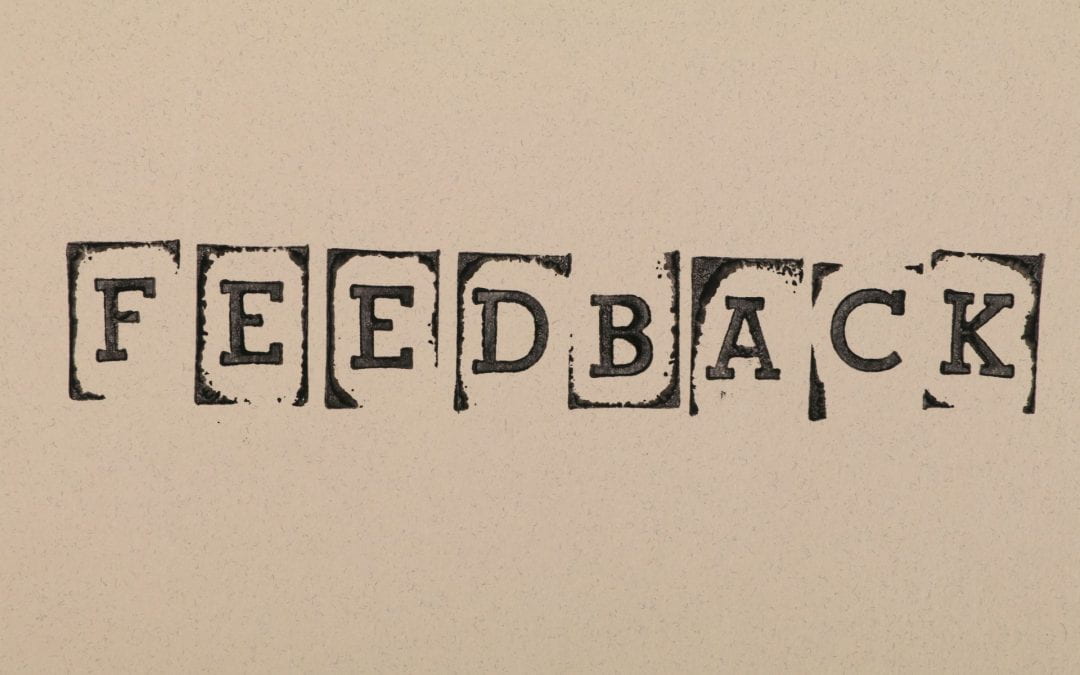If you teach at UChicago, you are probably familiar with how students can provide formal feedback on the courses you teach towards the end of the quarter. The University Registrar administers the Course Feedback process, and you are able to add customized questions, or opt out of the process altogether, using the Faculty Access tool.
But you need not wait until the end of the quarter to ask your students for feedback. Asking students for constructive feedback early or midway through the quarter can help you (and your students) gauge what’s working—and what’s not—while there is still time for everyone to make adjustments before the end of the quarter.
Why Seek Midterm Student Feedback?
There are a number of benefits to seeking early or midterm student feedback, including the following:
- Helps you identify improvements that can be made before the end of the term, improving student learning
- Helps students identify ways to take ownership of their own learning
- May help improve end-of-term exam scores and evaluations
Asking for and responding to feedback can be an effective way to demonstrate that you care about your students’ learning.
Develop a Process for Early or Midterm Feedback
Develop a process for seeking feedback. Here are some things to consider as you create your own process:
- Identify your goals for seeking feedback.
- What do you want to know?
- Are there specific parts of your course (e.g., readings or assignments) or students’ engagement that you want to evaluate?
- Communicate to students how (and why) you are seeking feedback.
- What do you hope to accomplish by seeking student input?
- What changes are you unwilling to make (e.g., assignments, grade percentages, etc.)?
- How will you collect student input?
- Collect the feedback. There are a number of ways you might collect feedback:
- Use notecards to collect students’ responses or an app like Poll Everywhere.
- Distribute an anonymous survey or questionnaire using Canvas Quizzes or Google Forms.
- Request a mid-course review from the Chicago Center for Teaching and Learning.
- Analyze the feedback.
- What patterns or clear trends emerge? You might consider coding open-ended responses according to topic or theme to help you uncover this.
- Pay most attention to feedback that is constructive and helpful while disregarding personal attacks and responses that are outliers.
- Communicate the results and how you’ll respond.
- Do you agree with some of the constructive feedback and are you able to identify a reasonable resolution? Share that with your students.
- Do you disagree with a trend observed in the feedback and are able (or unable) to provide a reasonable remedy? Explain why.
Don’t worry about creating the “perfect” process. You can always make incremental improvements to it in the future.
Example Questions and Surveys
Open-ended questions can encourage student reflection and provide unexpected insights, but they can be more time-consuming to analyze. Close-ended questions allow you to focus on specific areas of inquiry in a structured way, but you may miss feedback that you did not anticipate. You might consider including both types of questions in your survey, but be aware that the longer your survey is, the less likely your students will be willing to complete it.
Example Open-Ended Questions
The following three questions are variations of the open-ended questions developed by faculty from the University of Washington who developed a procedure called the Small Group Instructional Diagnosis:
- What is helping you learn in this course?
- What is hindering your learning in this course?
- What can you do differently to improve your learning?
Example Close-Ended Questions
You can ask students to respond to these close-ended questions by pairing them with a rating scale (e.g., “To what extent do you agree or disagree with the following statements?”).
- The syllabus, course schedule, and assignment details are clear.
- The course readings, lectures, class activities, and assignments contribute to my learning.
- The feedback that I receive is timely and helpful.
Midterm Feedback Survey Templates
The following surveys have been created in Google Forms and can be accessed in Google Drive to UChicago users who have authenticated using their CNET IDs. You can copy a form to your UChicago Google Drive account by clicking the Vertical Ellipsis next to the file name and selecting Make a copy. After you make your own edits, share the link to the form with your students.

By reaching out to students before the end of the quarter, you can identify common challenges —and possible solutions—in order to enhance your students’ learning in your course.
References
- Cohen. (1980). Effectiveness of student-rating feedback for improving college instruction: A meta-analysis of findings. Research in Higher Education., 13(4), 321–341. https://doi.org/10.1007/BF00976252
- Friedlander, J. (1978). Student perception on the effectiveness of midterm feedback to modify college instruction. Journal of Educational Research,71(3), 140–143. https://doi.org/10.1080/00220671.1978.10885056
- Harris, G. L. A., & Stevens, D. D. (2013). The value of midterm student feedback in cross-disciplinary graduate programs. Journal of Public Affairs Education, 19(3), 537-558. https://doi.org/10.1080/15236803.2013.12001750
- Overall, J. U., & Marsh, H. W. (1979). Midterm feedback from students: Its relationship to instructional improvement and students’ cognitive and affective outcomes. Journal of Educational Psychology, 71(6), 856–865. https://doi.org/10.1037/0022-0663.71.6.856

